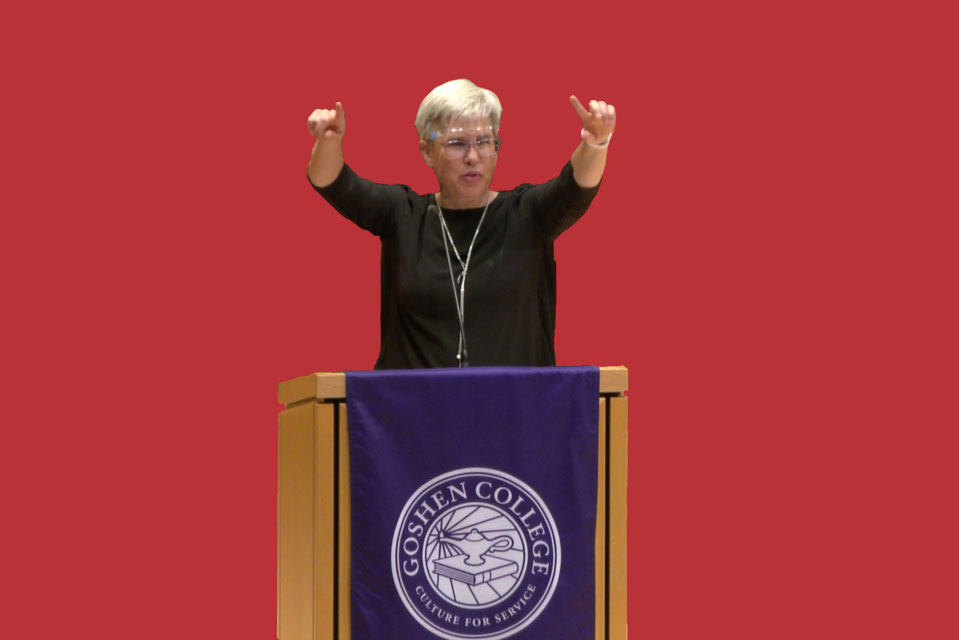Based on surveys distributed earlier this spring to students, faculty and staff at 64 different colleges and universities around the country, Goshen College was deemed one of the top three schools for early COVID-19 communication.
According to the survey conducted from Apr. 16 to May 5, 79% of students were generally or very satisfied with ongoing responses to COVID-19.The study, administered by The Higher Education Data Sharing Consortium, examined further questions including what stress the pandemic caused for students and faculty, as well as how the respective institution helped students and faculty through changes that took place.
64 institutions participated in student surveys, 29 participated in the staff member portion and 27 schools had faculty participate.
Survey responses were recorded and published for HEDS colleges and universities to see what other institutions were doing well and what wasn’t meeting students’ needs.
GC joined Principia College in Elsah, Illinois and Concordia University Texas as institutions with exceptionally high scores on all three surveys.
Jodi Beyeler, vice president for communication and people strategy, said that although it’s hard to point to what GC did differently than other colleges, there were clear goals and values made from the beginning on GC’s part.
With goals for open and transparent communication, careful listening and quick decision making, Beyeler believes campus has come together in light of a global pandemic.
“I have experienced our campus as supporting each other in profound ways, being gracious and kind to one another, and clearly seeing this as a time when we are all in this together, even though it is hard,” she said. “This has been a time when we have been able to unite. It is clear that not all schools have had that experience, for whatever reason.”
Charles Blaich, director of HEDS, said that the three outlying institutions, although distant in location, shared qualities similar to GC’s goals in their different approaches.
“We found that institutions where staff, faculty and students said the communication was more effective, [they] reported lower levels of worry, concern and stress,” Blaich said. “Quantitatively it became clear that good communication can really help.”
As students returned to campus in the fall, communication continued to take place between administration and students through the COVID-19 data dashboard and email reminders from the Pandemic Task Force to keep up with the big four.
Most recent numbers from the data dashboard show five new positive cases among students, bringing the cumulative number of positive cases to 20.
As GC continues to respond to the obstacles that COVID-19 brings, students and faculty can now know what to expect from the 2021 spring semester following a tentative schedule being shared by academic dean Ann Vendrely last Friday, Oct. 2.
The plan includes a week-long delay to the start of the semester and five ‘study days’ spread throughout the semester, where no classes will be held, in place of the usual five-day spring break.
“Starting a week later allows more time between any holiday celebrations that students may attend and the start of classes,” Vendrely said. “If students are traveling or spending time with friends and family during the holidays, we hope they will then self-quarantine prior to returning to campus.”
The switch to study days is in response to the request from both students and faculty, for more built in breaks throughout the semester, Vendrely added.
To evaluate fall efforts among institutions, HEDS sent out a second round of modified student surveys with plans for faculty and staff questionnaires to be finalized by the end of this month.
This time around, Blaich isn’t as optimistic about the results that will come from an updated survey. “My guess is that students are struggling…” he said.
Still, Blaich says that the goal remains to provide a platform for students, faculty and staff to share their experiences with institutional leadership in order to make the time of COVID-19 easier for everyone.



